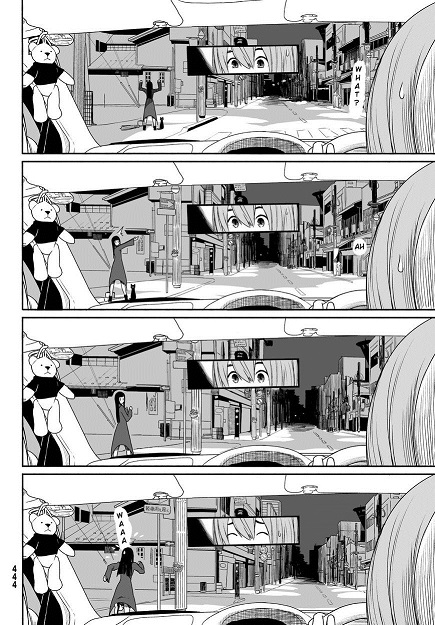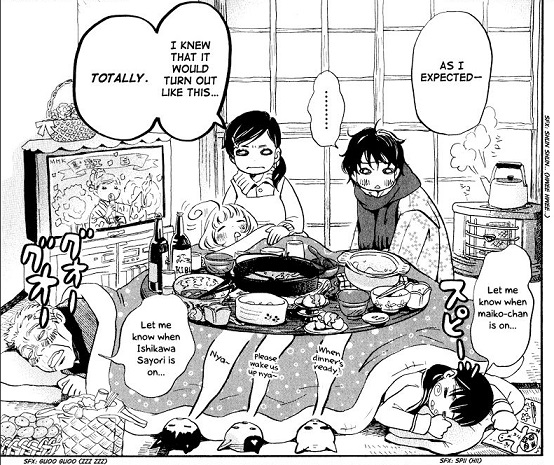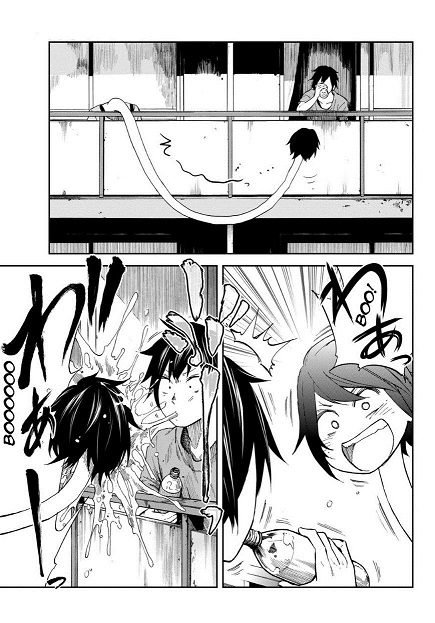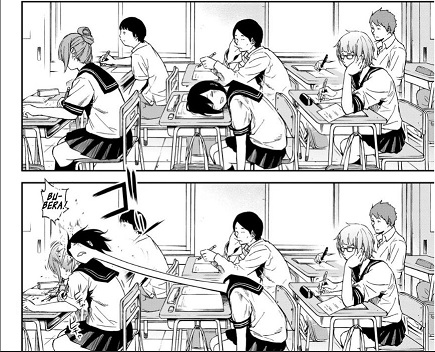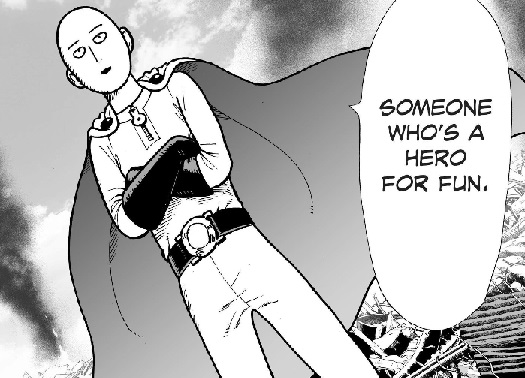
Saitama was an ordinary, unemployed man until one day he decided that if he couldn’t find a proper job, why not become a superhero for fun. So began an intensive training routine of ” 100 push-ups, 100 sit-ups, 100 squats and 10 km of running every day”. Three years later he’s the strongest superhero in the world, somebody who can defeat any enemy no matter how strong with one punch: One-Punch Man. Which really puts a crimp on his plans: it’s no fun to be a hero if you can never have a proper fight. Though Saitama gets increasingly powerful heroes and villains to deal with, the end result remains the same. Nor does being the strongest hero bring Saitama fame or glory. At first his efforts go unrecognised, his victories attributed to those heroes who happen to be in the neighbourhood when he does his thing. Later on, when he gets registrered as a proper hero, he’s immediately suspected of cheating somehow. Because there’s no way a low class hero like him is actually capable of doing what does, is there. He just doesn’t look like a hero so he doesn’t get treated like one. It’s an old Marvel Comics trick: give the hero problems he can’t solve with his fists.
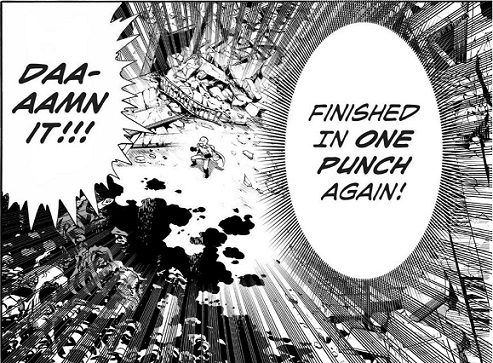
Those are basically the two jokes that drive One-Punch man: he can neither get a good fight nor the respect he deserves. It’s a simple concept executed brilliantly, which is why it could make the jump from a self published web comic with ONE’s not very good artwork to a proper manga series, art now courtesy of Yusuke Murata. Saitama himself basically kept his look from the web comic, but the rest of the cast got a realism upgrade, though many of them are still grotesques, just with added shading and defined muscles. Murata is a great artist for a series that lives on its fight scenes, while ONE has a knack for telling absurd stories absolutely straight, taking the lunacy of your average superhero or shounen battle manga up to eleven without feeling the need to point out how absurd it all is. One-Punch Man works because it keeps that essential beat of a shounen manga, of introducing bigger and bigger menaces with each new storyline and it keeps things exciting by focusing as much on all those other heroes who can’t end their fights with just one punch.
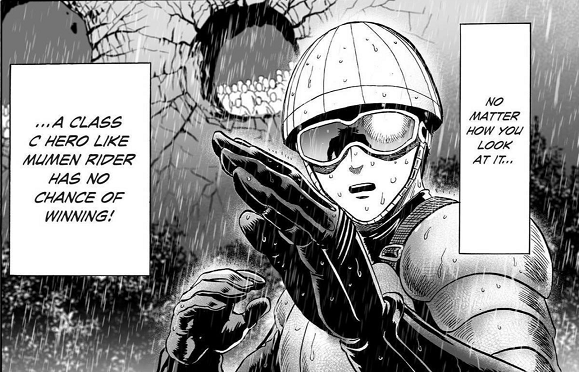
Heroes like Mumen Rider, a hero whose power is that he rides a bicycle and wears biking gear. He first popped up getting the credit for one of Saitama’s actions in an early story, before he got his chance to shine taking on a villain that had already beaten the crap out of a dozen or so overpowered heroes. What looked like a joke character turned out to be a genuine hero, putting his life on the line against somebody he had no hope of defeating, just to try and protect the innocent, no matter how futile. It’s absurd to think that a suburban dad getting way too much into biking would make a superhero, but the character and the story both play it straight and in the end, for all the silliness, Mumen Rider is a hero.
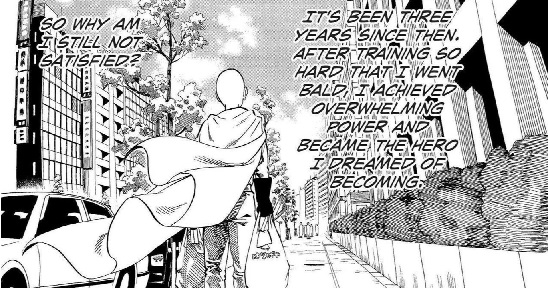
That I think is the core of One-Punch Man‘s appeal, having completely stupid, completely serious characters wander around a ridiculous world populated by idiots but never, ever coming out and admitting it, leaving them their dignity rather than depantsing them. You can read it as a straightforward superhero story and enjoy the fights even as you get amused at the names and powers thrown around. Saitama himself never notices the absurdity of his life; it helps that he’s an idiot. One-Punch Man therefore is one of the best superhero comics I’ve read in years, because it embraces the essential stupidity of superheroes.

